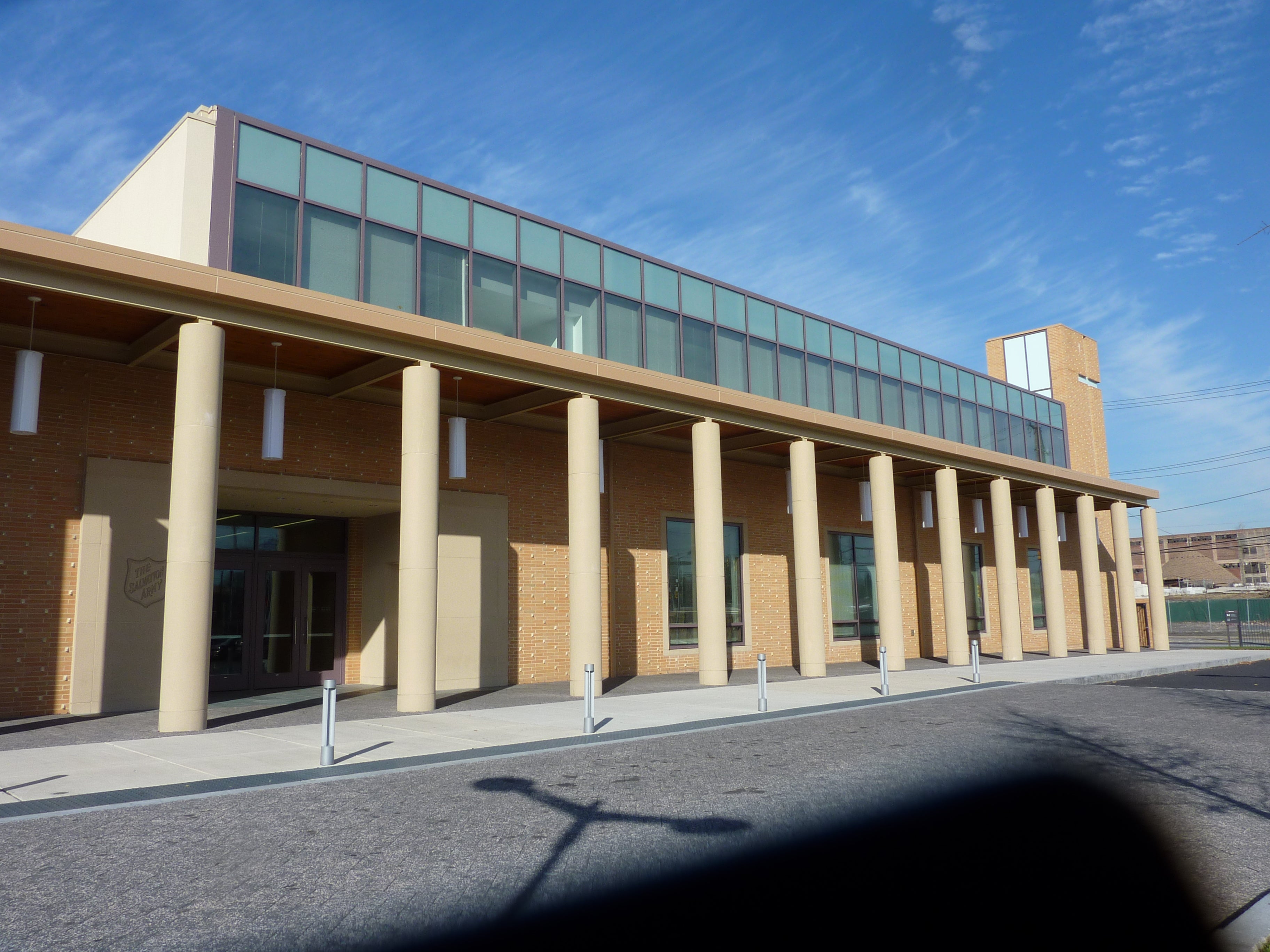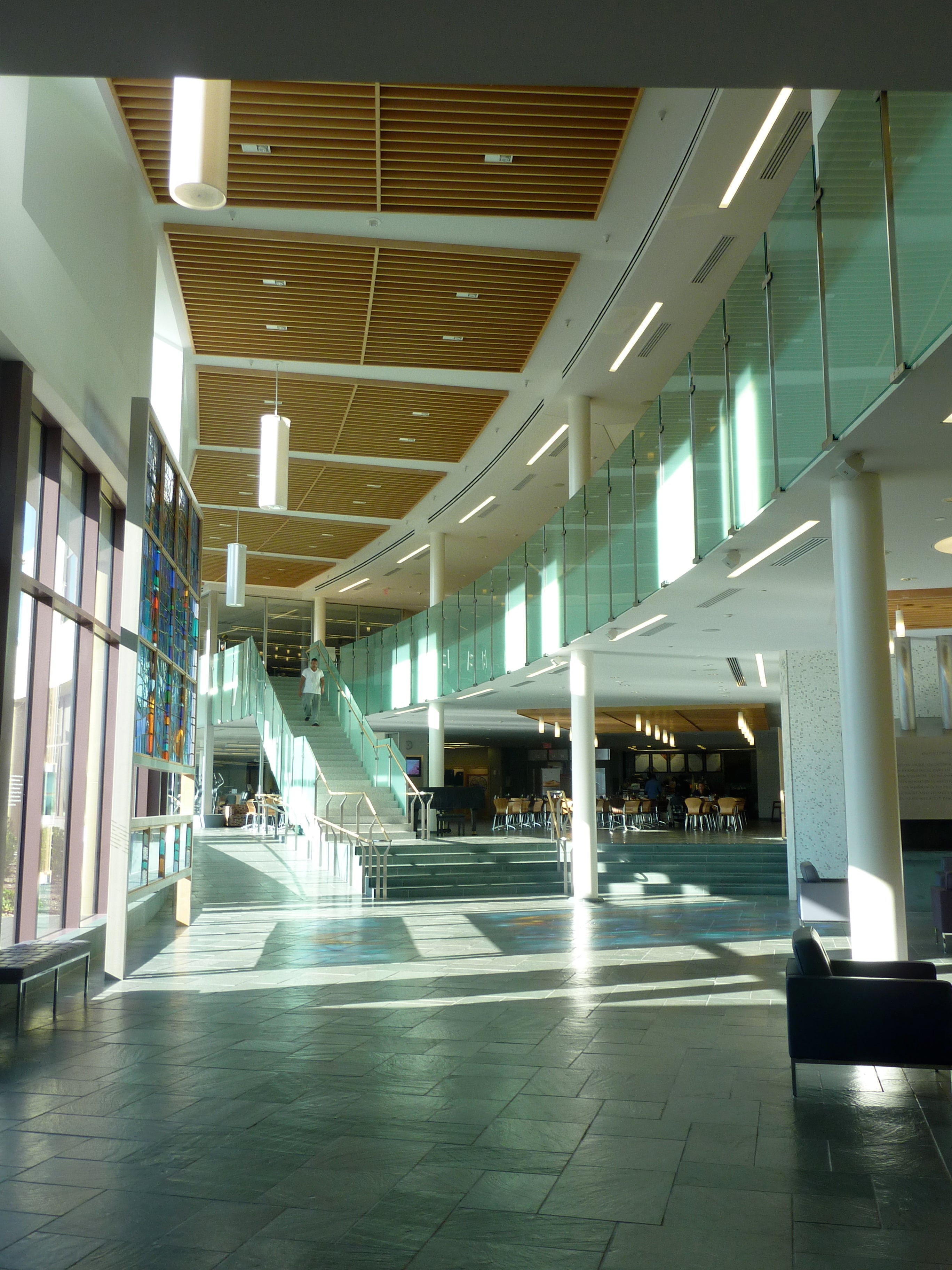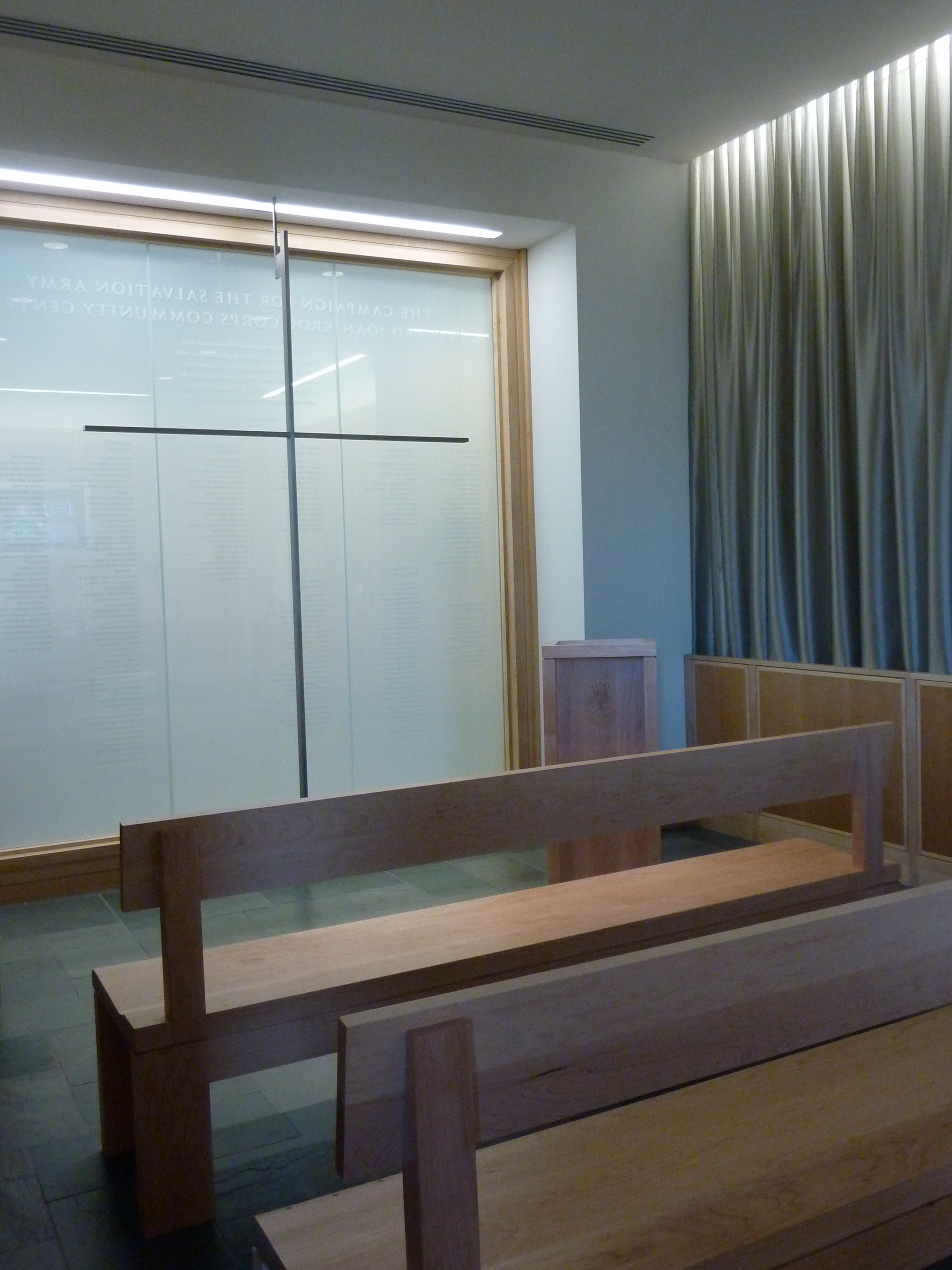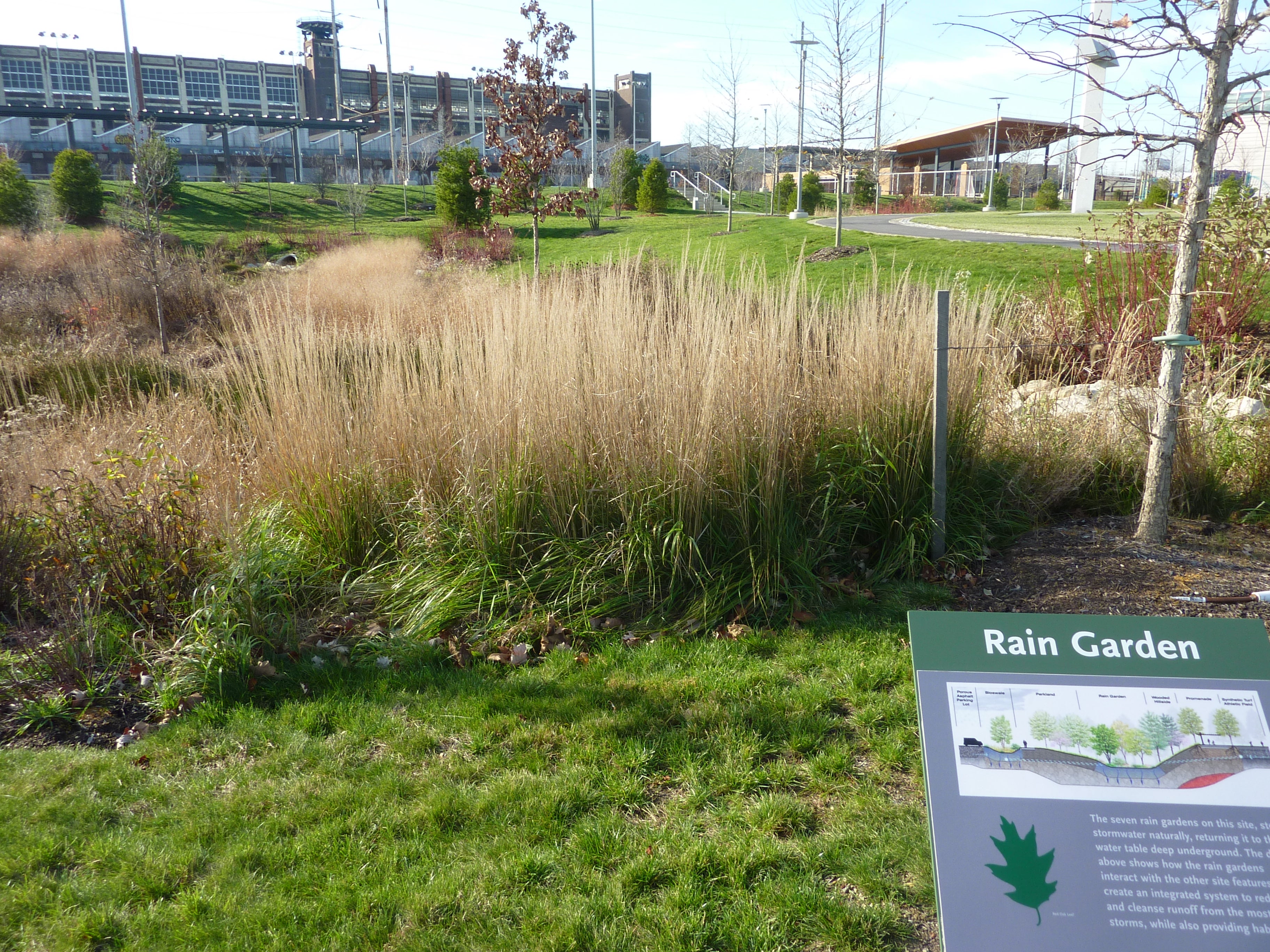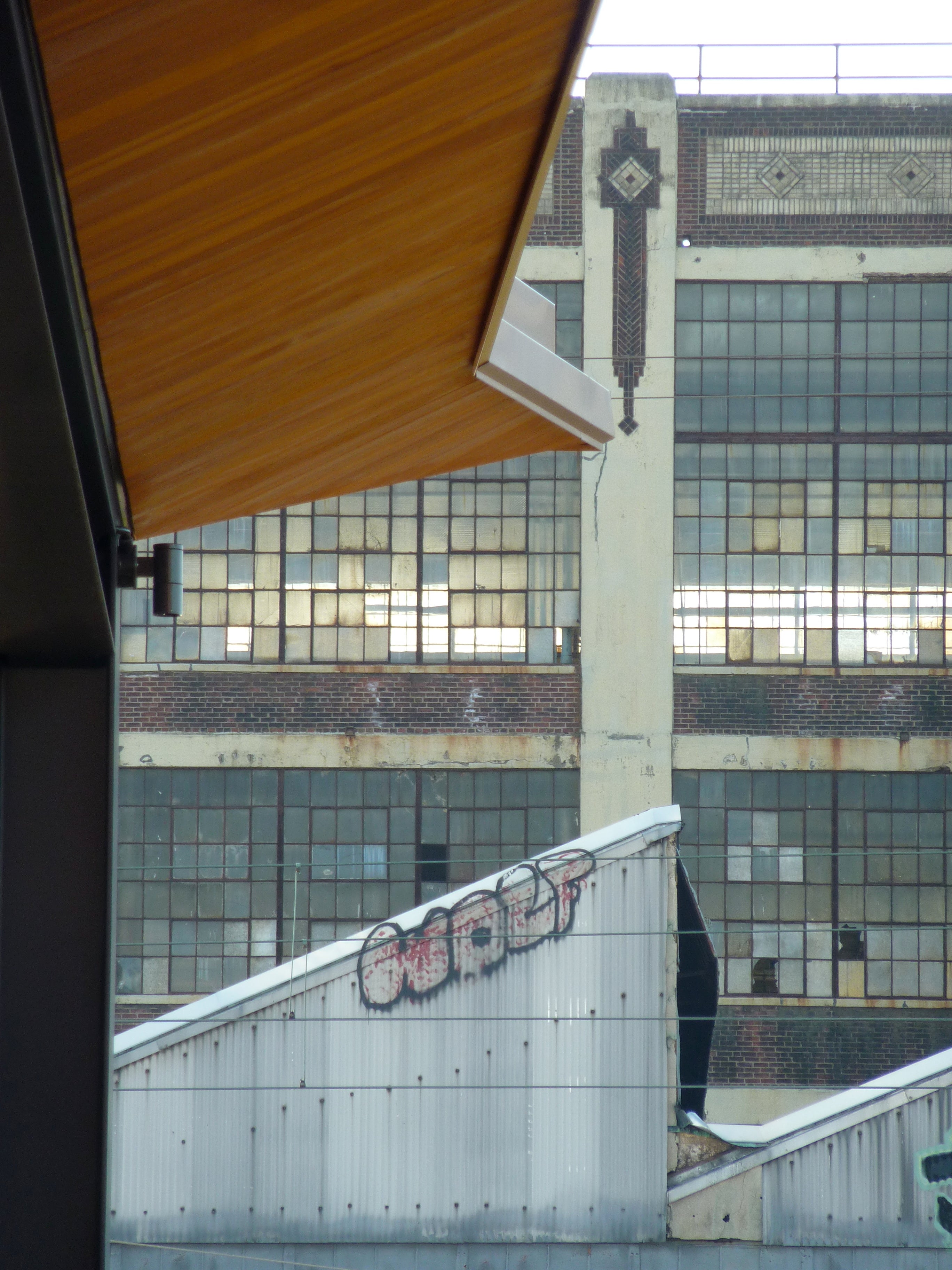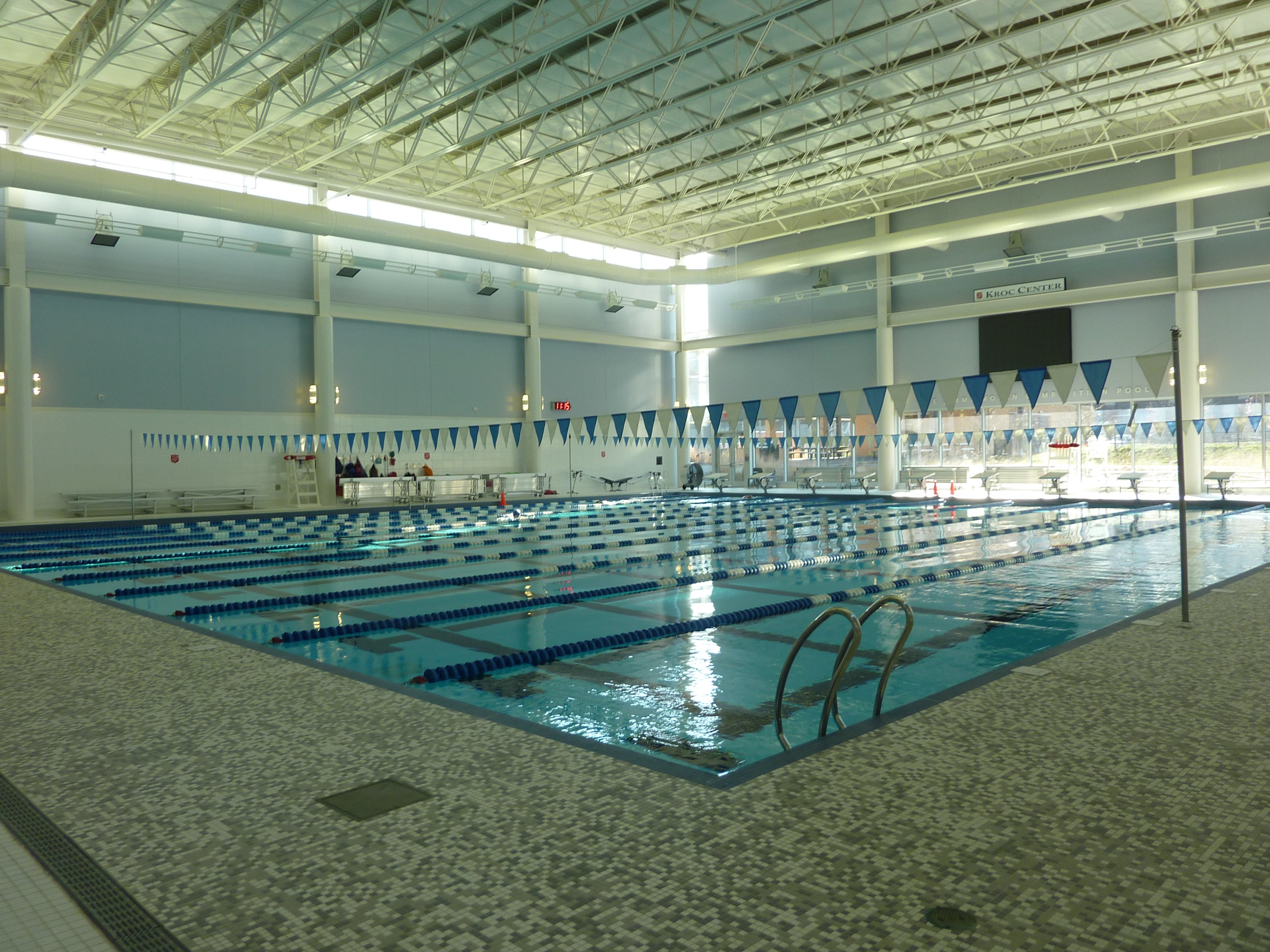MGA Architects wins AIA Pennsylvania Award for Kroc Center
In Hunting Park, local firm MGA Partners Architects, has crafted a new low-slung orange brick and white stucco building with swooping expanses of glass windows, anigre wood ceilings and walls, and slate floors. With a porticoed facade that gives it an air of civic monumentalism, it’s strikingly at odds with the huge abandoned factories and great swathes of vacant land that surround it.
Last month, the project earned MGA the 2012 Design Excellence Award from the Pennsylvania Chapter of the American Institute of Architects.
Opened late in 2010, the Philadelphia Salvation Army Ray and Joan Kroc Corps Community Center, as it’s rather cumbersomely known, is a 130,000-square-feet building that now employs 450, and boasts a roster of almost 10,000 members who come to work out, recreate and play ball here.
“Often jurors are looking for the cute and clever projects,” says Daniel Kelley, partner at MGA. “This time they really wanted to reward work that’s made a difference to the community and that represented a comprehensive design effort and mission.”
Local landscape architects Andropogon designed the site’s sweeping greens, which include athletic fields, bioswales, flowering dogwoods and magnolias, an allee of elms, and a burgeoning vegetable garden that for the moment is covered in a sea of red clover and alive with honeybees.
Another local design team, PZA Architects, crafted an aquatics center that would be the envy of a five-star Caribbean resort, with a competitive swimming pool, a leisure pool, lap lanes, a children’s area, and a current river.
It’s hard to believe that the parcel was, most recently, the site of a city-owned car impound lot, and that Donald Trump once eyed it for development, as a casino.
The $72 million project comes courtesy of another billionaire, Joan Kroc, of McDonald’s fame.
“The uses are the complete antithesis to each other,” said Kelley a few months ago as he offered a tour of the facility. “This is all about giving resources to the community.”
It’s one of 18 similarly outfitted centers that have debuted since 2008. Patterned after one in San Diego, funded by Kroc and opened in 2002, the centers boast an ambitious mission to offer state-of-the-art recreation services to impoverished communities at reasonably priced (about $30 or $40 a month for adults) and often subsidized rates.
Ultimately, it’s hoped they’ll serve as stimuli for further economic development in otherwise left-to-die areas.
In Philadelphia, stirrings are already afoot. The Planning Commission recently retained Wallace Roberts and Todd to prepare a study of the redevelopment potential of the Hunting Park West neighborhood. And, a 30-acre, 220,000 square-foot community shopping center, to be anchored by a 71,000 square-foot ShopRite supermarket, is under construction.
On this site, now known as Bakers Centre, the remains of a 460,000 square-foot Tasty Baking production factory building is being preserved and marketed for mixed-use redevelopment.
Concurrent with the developments, the city’s streets department has made some major improvements to intersections, to address pedestrian safety issues, and across from the Kroc Center, a new bus stop was added.
“We see this as an area of great potential,” said Gary Jastrzab, executive director of the Philadelphia City Planning Commission, adding that the city’s commerce department has even sponsored presentations and tours of the area for developers. “For the past few years, we’ve been trying to introduce them to the area,” he said. “They may have been clinging to a vision of this as an industrial wasteland and we wanted to open their eyes.”
Standing in the Philadelphia center’s parking lot, Kelley, indicated the graffitied walls and broken glass windows of the defunct Budd plant, where passenger train cars were manufactured into the early 1980s. Five miles or so from downtown, the neighborhood is now home to some 200,000 people — a third of whom live below federal poverty levels.
“With their commitment to discipline and their dedication to living modestly, the idea of architecture can seem almost anathema to the Army,” mused Kelley. “But Mrs. Kroc argued that architecture has the ability to uplift souls.”
Eventually, there will be about two dozen centers, winnowed down from a larger pool of applicants to those that were able to meet the program’s stringent requirements, including a solid plan to raise supplemental funds to build and endow the project. (Plans for a Detroit Kroc center fell through in 2009, after a faltering economy and a lack of support for what some donors deemed a more flashy effort than traditional Army services.
Similar problems befell planned centers in St. Paul, MN., Long Beach, CA., and Massena, NY.) Five more are scheduled to finish completion within the next year, including one in Chicago which debuts this June. Most are new-built like Philly’s, but the Augusta, GA. project did involve the relocation and rehabilitation of several 1930s factory workers’ cottages for use as administrative offices and gathering places.
And, in Dayton, OH., the $30 million Kroc Center campus, includes new buildings as well as the meticulous renovation of a 160-year-old nationally-registered mansion.
In Philadelphia, “we did suggest that they reuse some of these former factory buildings,” said Kelley. “But they wanted to do it from scratch.” The reasoning might have been practical, Kelley added, pointing out that older buildings don’t often offer the right kind of space for things like indoor swimming pools and basketball courts. But, he posits, the mandate might also have to do with Kroc’s inclination toward believing that sparkling buildings set amidst uninspiring landscapes achieve the necessary soul-lifting better than revamped ones.
As for lifting whole cities. . . Jastrzab remains hopeful. “The Kroc Center has given us a site that could begin to fulfill some of the requests for better services and amenities in the area,” said Jastrzab. “We’ll continue to look at the area for opportunities to make use of historic factory buildings for new light industry, to improve streetscapes and traffic flows, to enhance retail services, and to continue the strong green theme that is so much a part of the city’s major planning efforts.”
This story was edited, adapted, and updated from a longer piece that appeared in the March 2012 issue of Planning, the magazine of the American Planning Association.
Contact the reporter at jgreco@planphilly.com and follow her on Twitter @joanngreco
WHYY is your source for fact-based, in-depth journalism and information. As a nonprofit organization, we rely on financial support from readers like you. Please give today.



